Rex Gibson Crew – Assigned 752nd Squadron – March 28, 1945

(Photo: James Amlung)
Crash on take off – April 14, 1945 – Accident Report 45-4-14-520
| Rank | Name | Serial # | Crew Position | Date | Status | Comments |
|---|---|---|---|---|---|---|
| 2Lt | Rex M Gibson | 02061679 | Pilot | 14-Apr-45 | KIA | Bay County, FL |
| 2Lt | Rufus G McSwain | 0836998 | Co-pilot | 14-Apr-45 | KIA | Forrest County, MS |
| F/O | Robert F Amlung | T137262 | Navigator | 14-Apr-45 | KIA | Cambridge American Cemetery |
| Sgt | Edward H Bockelman | 36659687 | Radio Operator | 14-Apr-45 | KIA | Cambridge American Cemetery |
| Sgt | Leonard J Carriero | 32810749 | Flight Engineer | 14-Apr-45 | KIA | Cambridge American Cemetery |
| Sgt | Westford E Marr | 11042316 | Aerial Gunner | 14-Apr-45 | KIA | Cambridge American Cemetery |
| Cpl | Bernard L Robins | 13200629 | Aerial Gunner | 09-Apr-45 | FEH | Promoted to Sgt |
| Cpl | Joseph D Pare | 31409949 | Armorer-Gunner | 09-Apr-45 | FEH | Promoted to Sgt |
| Sgt | Willie R Wilks | 14163580 | Aerial Gunner | 14-Apr-45 | INJ | Crashed after takeoff |
Rex Gibson’s crew joined the 458th late in the war, on March 28, 1945. F/O Louis Contino, the crew’s bombardier, was not assigned with them and it is assumed that he was pulled from the crew prior to their departure from the States. The normal indoctrination period for a new combat crew arriving in the ETO was nearly three weeks, but it seems that Gibson’s crew went through theirs in record time. The crew flew their first mission on April 11, 1945 to an oil refinery at Regensburg, Germany, only 14 days after their arrival. As was common practice for new crews, they flew in the 3rd Squadron, trailing element on this mission.
Three days later the crew was preparing for their second mission. The 458th’s target on April 14, 1945 was Point de Grave, in France. This was an area that had been by-passed by the Allied forces and was still occupied by about 122,000 German troops. The area was very well defended and was denying the Allies the use of the port city of Bordeaux. Gibson’s crew was slated to fly one of the original B-24’s in the group named The Bird which had flown its first mission on March 3, 1944. Gibson would be taking this war-weary Liberator on its 82nd trip over the Continent.
As on April 11th, Gibson was flying in the third squadron in the last element, and was to be 27th in the takeoff order. Directly ahead of Gibson on the runway was the crew of 2Lt David Totten aboard the B-24 Hookem Cow. Totten’s crew was assigned to the 754th Squadron on the same day that Gibson’s was assigned to the 752nd. They also flew their first mission on April 11th and, like Gibson’s crew, were taking off on their second this morning. When it came time for Hookem Cow to take off they rolled down the runway and lifted off into the dark, foggy morning. Thirty seconds later at 5:12 A.M., Gibson let go of the brakes and, at full power, began their take off run. A few short seconds after becoming airborne, the right wing of The Bird struck a tree and the left wing hit a telephone pole in the extremely heavy fog and the plane slammed back into the ground. The visibility was so bad that the accident was completely unobserved and was not reported until 9:15 AM. Of the seven men on board, Sgt Willie Wilks, riding in the waist was the only survivor, having lain in the field a short distance from the plane for about four hours before being found by the crash crews.
The Totten crew, who had taken off just moments before Gibson fared no better in the fog. They also crashed a few minutes after take off. Out of their seven man crew there were only two survivors.
Sgt’s Joseph D. Pare and Bernard L. Robbins were not slated to fly on this mission and were not on board. It is not known if they flew any additional missions in the ten remaining days of the European air war.
————————-
ACCIDENT REPORT AR45-04-14-520
The plane was taking off on a combat mission at night and under reduced visibility caused by fog conditions. Actual visibility at take-off time was unknown as the accident occurred between 0500 and 0600 the times of weather observations. The plane crashed soon after take-off the right wing hitting a tree and the left wing hitting a telephone pole before the plane hit the ground. The aircraft was completely destroyed.
Missions
| Date | Target | 458th Msn | Pilot Msn | Serial | RCL | Sqdn | A/C Msn | A/C Name | Comments |
|---|---|---|---|---|---|---|---|---|---|
| 11-Apr-45 | REGENSBURG | 224 | 1 | 41-29567 | G | 7V | 26 | MY BUNNIE / BAMBI | |
| 14-Apr-45 | POINTE DE GRAVE | 225 | ACC | 42-100425 | O | 7V | 82 | THE BIRD | Crash on Takeoff |
B-24J-70-CO 42-100425 7V O The Bird
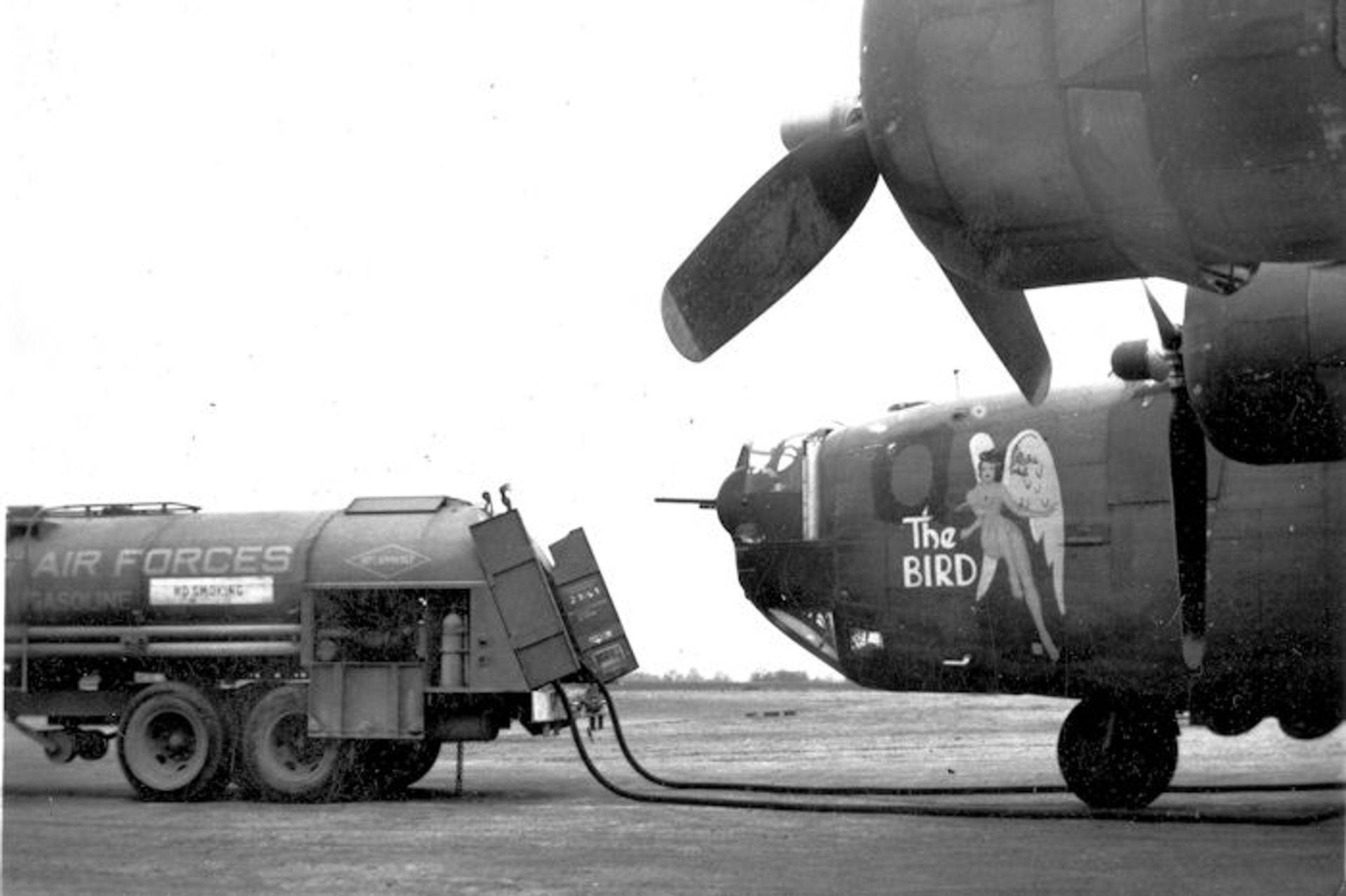

The Bird refueling at Horsham and in flight
(Photos: George Reynolds)
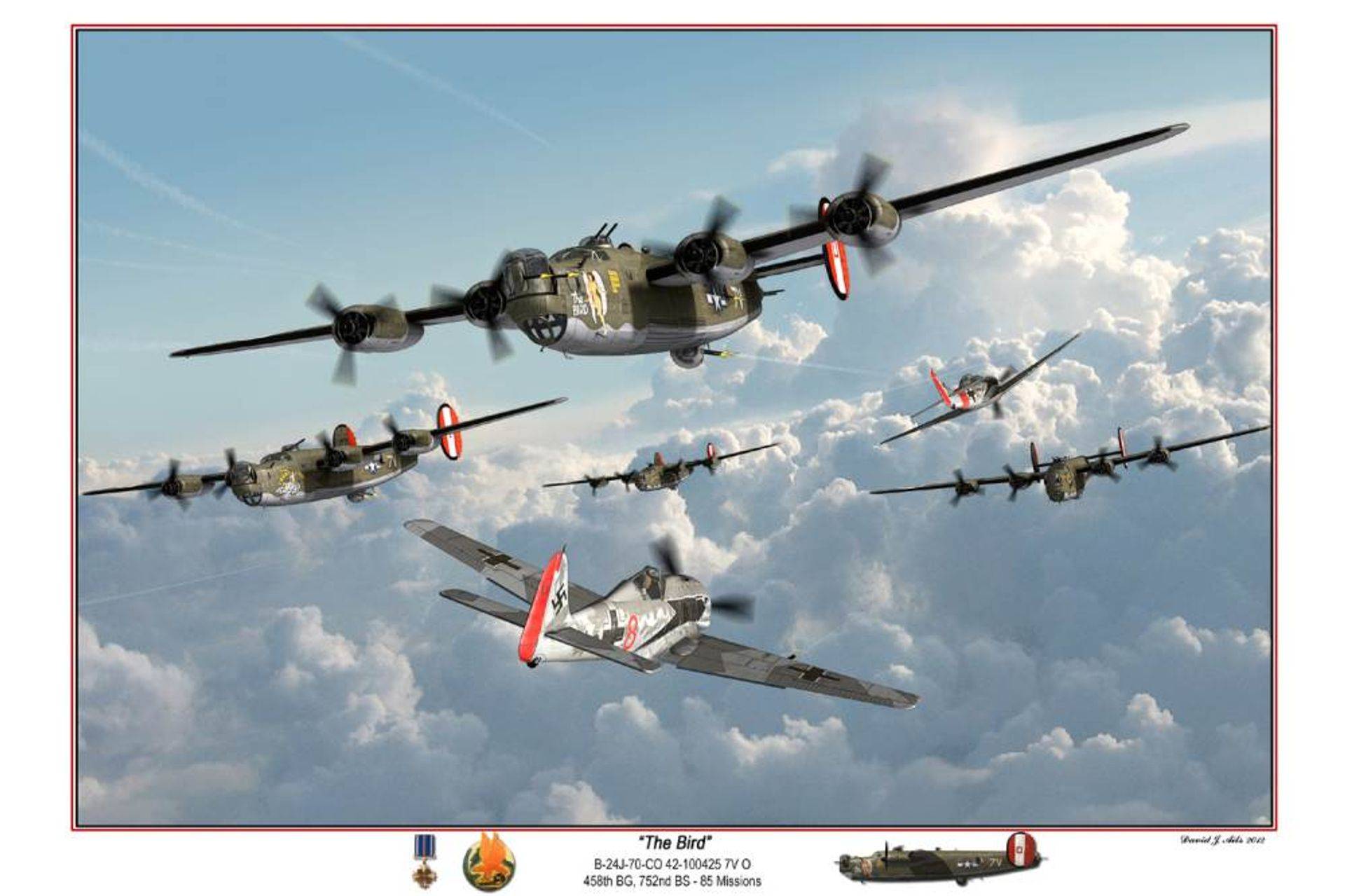
(Painting: David Ails)
April 14, 1945
DESCRIPTION OF ACCIDENT
The plane was taking off on a combat mission at night and under reduced visibility caused by fog conditions. Actual visibility at take-off time was unknown as the accident occurred between 0500 and 0600 the times of weather observations. The plane crashed soon after take-off the right wing hitting a tree and the left wing hitting a telephone pole before the plane hit the ground. The aircraft was completely destroyed.
Immediate Cause: Right wing hitting a tree under poor visibility conditions.
Underlying Cause: Plane apparently did not gain sufficient altitude after take-off. Pilot was on instruments and may have thought he was climbing when he was not.
Responsibility: 100% Unknown
Recommendations: None
SIGNED
JAMES A. HOGG 0-308596
Lt Col, Air Corps,
President
WALTER H. WILLIAMSON 0-389443
Lt Col, Air Corps
Pilot
WALTER W. LAVELL 0-23032
Major, Air Corps,
Pilot
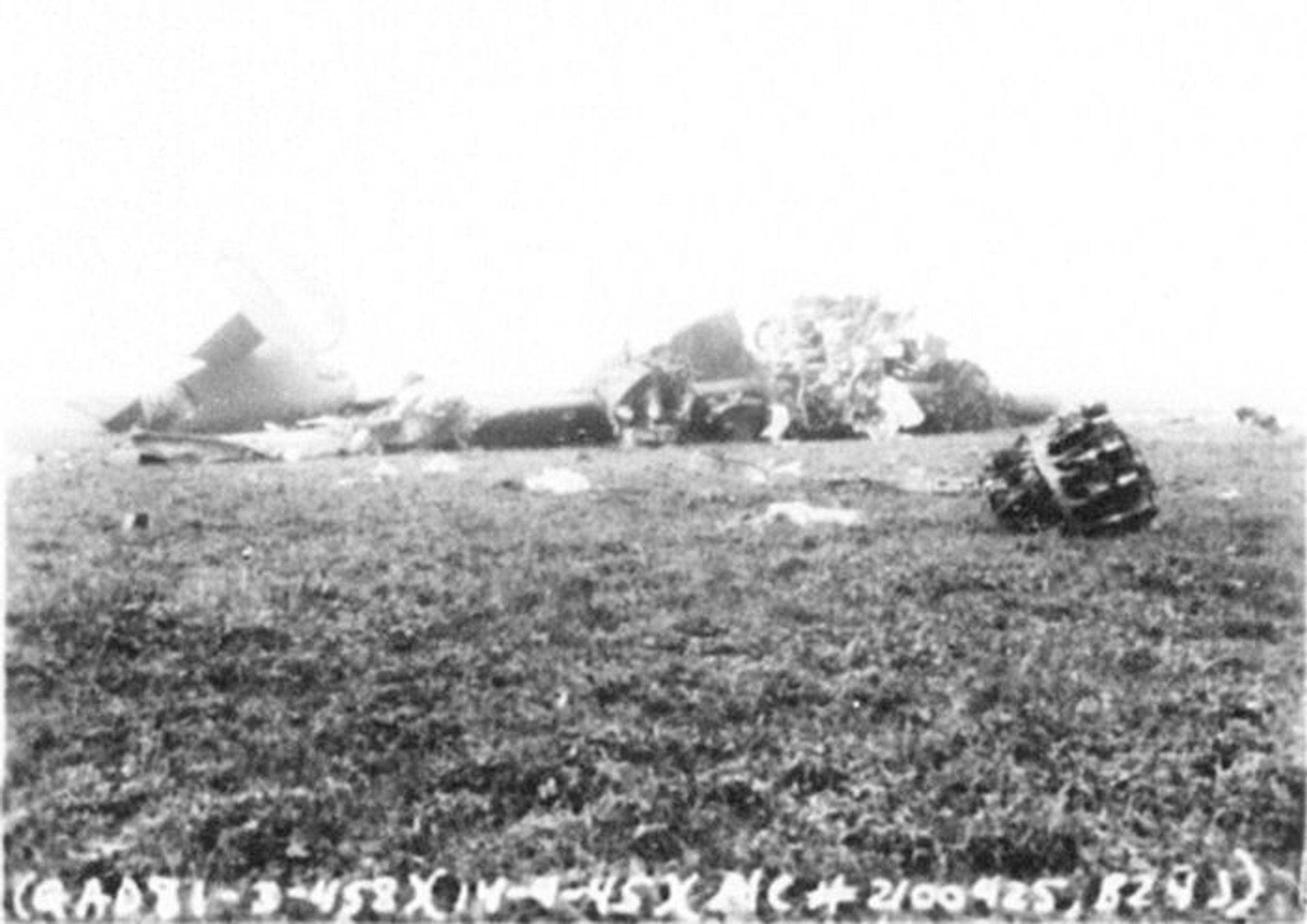
STATEMENT OF WEATHER FOR 0500-0600 HRS. 14 APRIL 1945
1. THE FOLLOWING IS A STATEMENT OF THE WEATHER EXISTING AT AAF STATION 123 FOR 0500-0600 HOURS, 14 APRIL 1945, SUBMITTED IN ACCORDANCE WITH 2 AD INSTRUCTIONS 55-9A, DATED 16 JANUARY 1945.
TIME CEILING SKY COVERAGE WEATHER VISIBILITY TEMP-D.P WIND
0500 UNLIMITED 0/10 MIST 1800 YD 45-43 SE-3MPH
0600 UNLIMITED 0/10 FOG 300 YD 43-42 SSE-4MPH
2. THE VISIBILITY DETERIORATED RAPIDLY FROM 0500-0600 HOURS AT THIS STATION. AT AAF STATION 145 [RACKHEATH], THE VISIBILITY DECREASED FROM 800 YARDS TO 300 YARDS, DURING THE SAME TIME. THIS WAS A LOCAL FOG CONDITION AT THESE TWO BASES. NO OTHER STATION IN THIS DIVISION REPORTED LESS THAN 1800 YARDS, DURING THE PERIOD OF THE ACCIDENT.
3. AAF STATION 145 LIES APPROXIMATELY 6 MILES ENE OF AAF STATION 123. SINCE THE WIND WAS SE-SSE AT 3-4 MPH, IT IS POSSIBLE THAT THE LOCAL FOG MAY HAVE MOVED FROM THAT DIRECTION TO OBSCURE THE FAR END OF THE TAKE OFF RUNWAY, AT THE TIME OF THE ACCIDENT. THE TAKE OFF WAS ON RUNWAY 05.
SIGNED
GEORGE J. HEBEL,
CAPTAIN, AIR CORPS
STATION WEATHER OFFICER
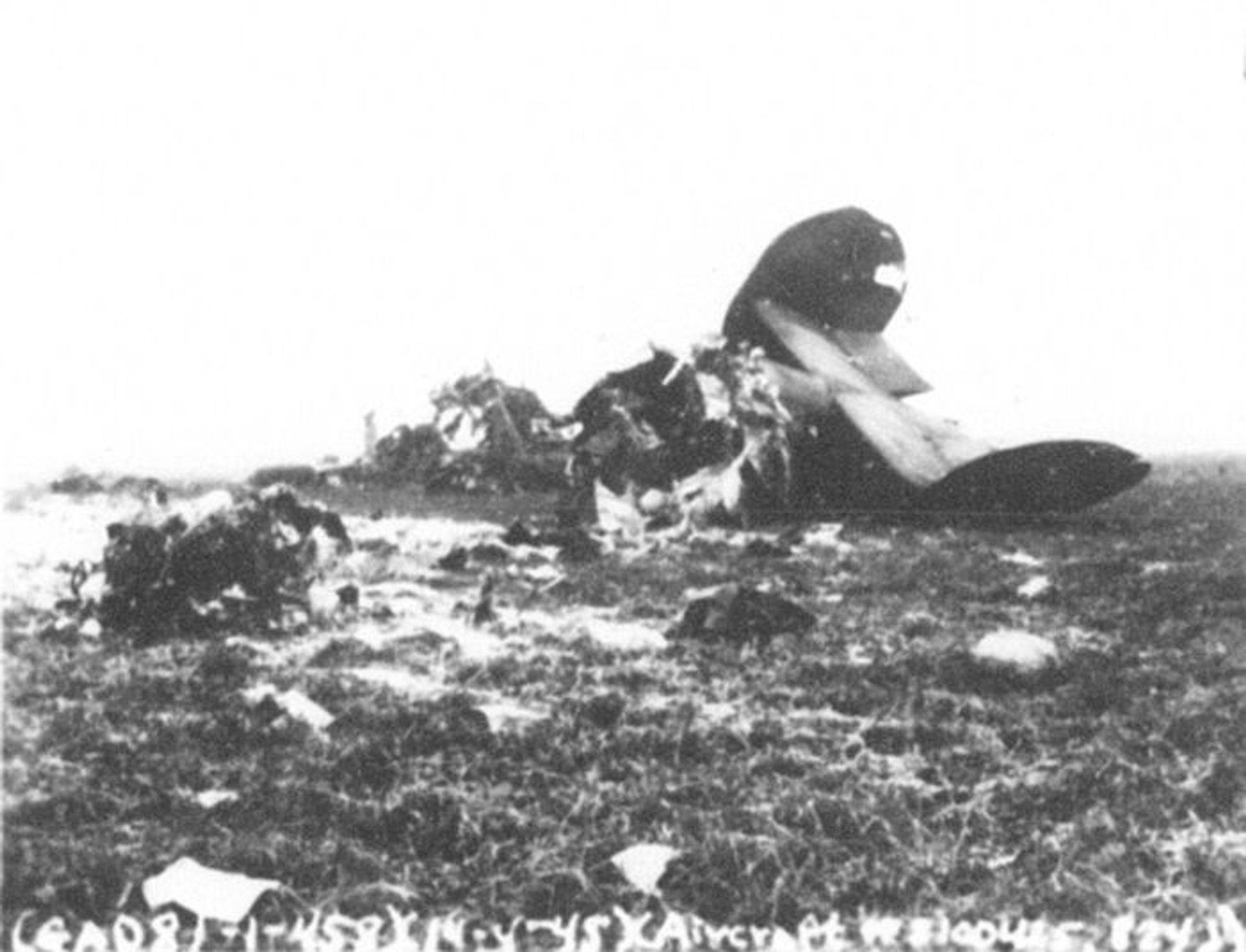
Flying Control
AAF 123 APO 558
14 April 1945
ACCIDENT STATEMENT
At 0915 hours this date the guard house called the tower to report the discovery of another aircraft that had crashed. Crash action found it to be B-24 aircraft 425 “O”, piloted by Lt. Gibson of the 752nd squadron. This aircraft had apparently crashed at take off time, but due to the fog conditions was not observed. One crew member out of seven survived.
Weather: SE AT 3 M.P.H. – Viz. 1800 Yard
Signed
ROBERT A. QUINLIVAN
1st Lt., Air Corps
Flying Control Officer
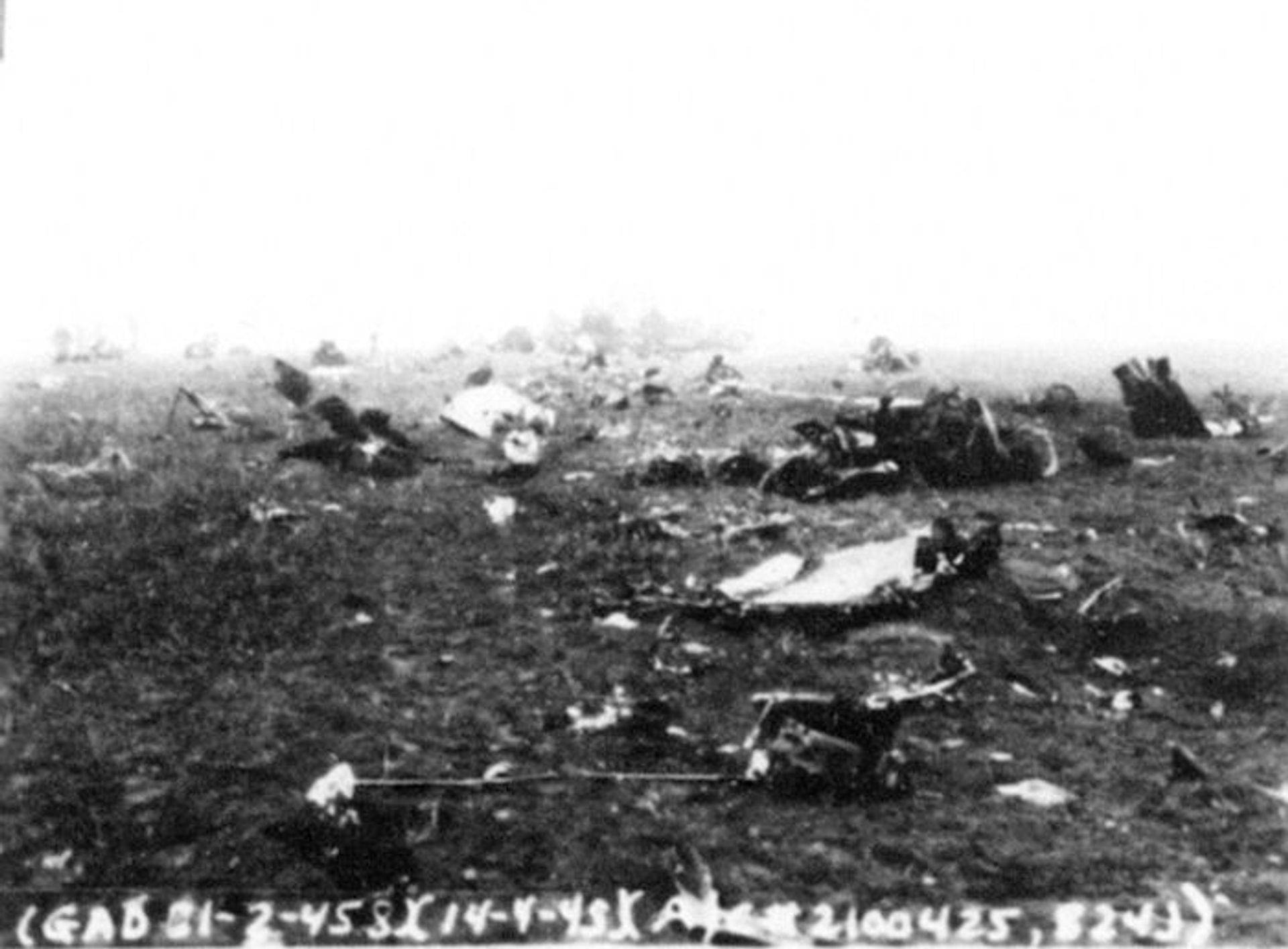
Funeral services American Cemetery at Cambridge, England
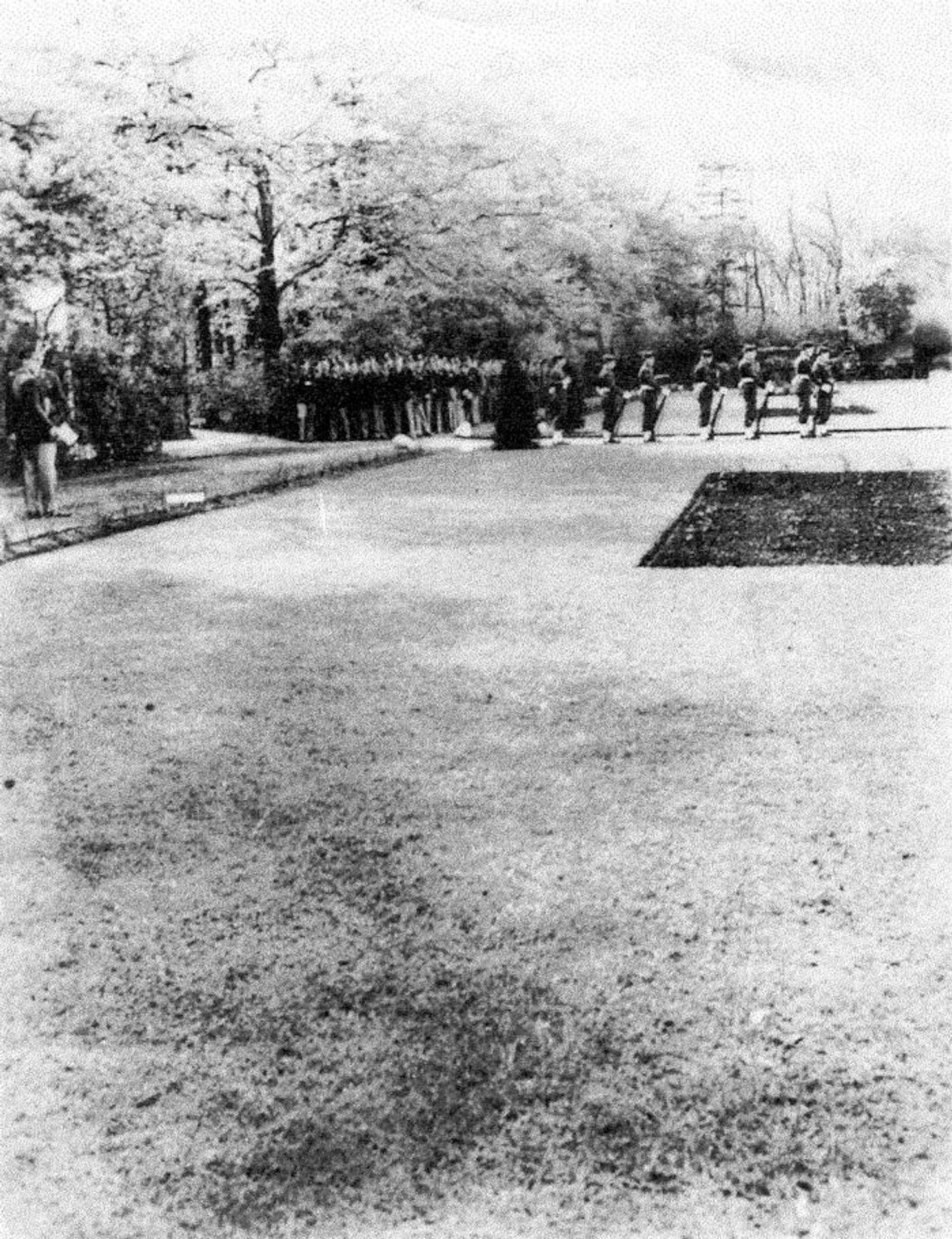


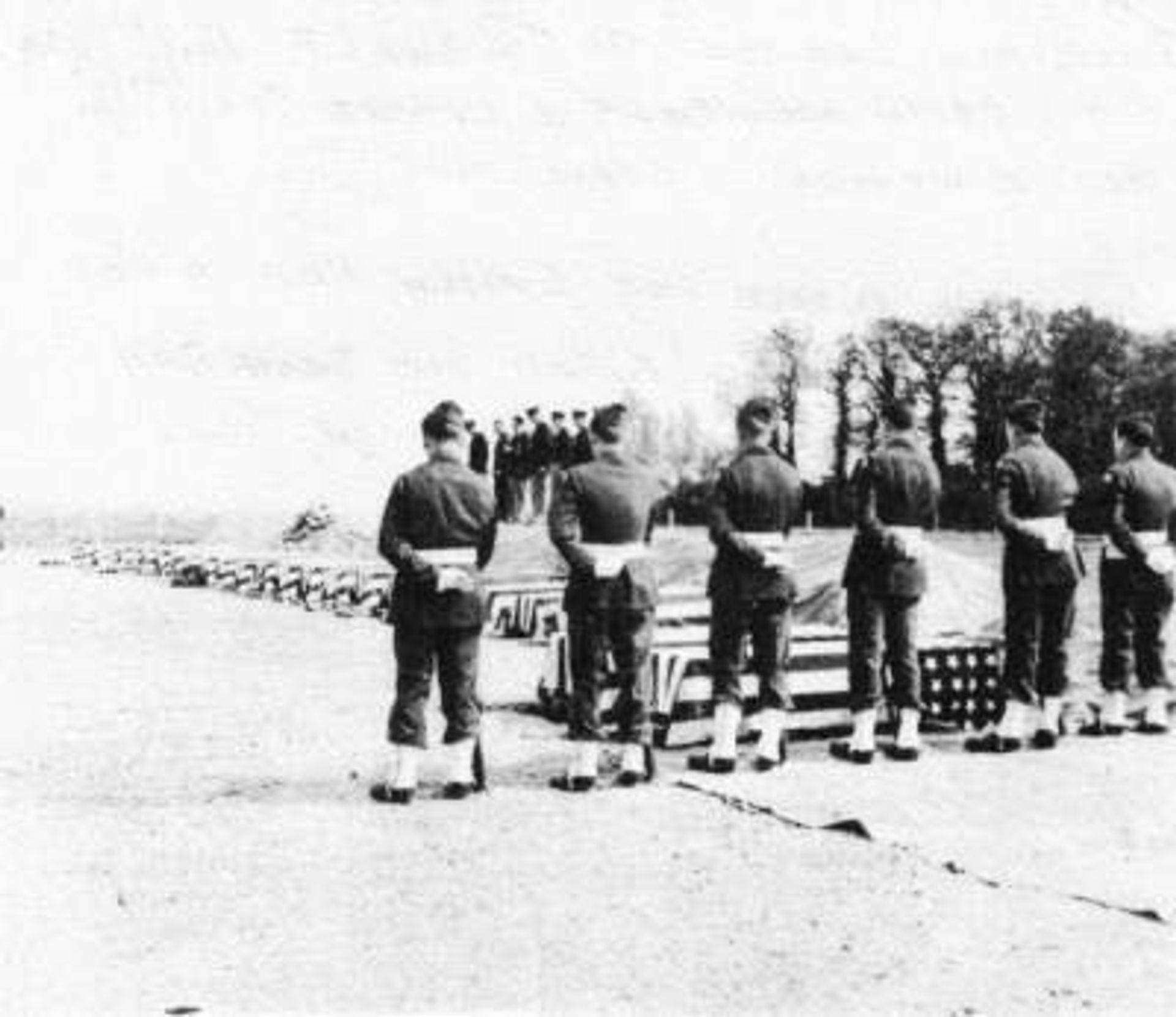
Rex Gibson’s Crew is laid to rest with other American servicemen and one Red Cross woman.
(Photos: James Amlung)
Sgt Leonard J Carriero
L. Carriero Killed, 77th War Victim
Cpl. John Lord, Of Glenville, Also Reported Killed In German Fighting
CARRIERO IN ENGLAND
The deaths of Sgt. Leonard J. Carriero, Army Air Force, of 66 Purdy Avenue, Port Chester, and Cpl. John E. Lord, a member of an Army tank unit, Glenville Road, Glenville, were announced today as a result of telegrams received in this section during the weekend from the War Department. Both men were reported killed in action.
News of the death of Sgt. Carriero, the 77th Port Chester man reported killed in service so far, was received yesterday afternoon by his parents, Mr. and Mrs. Joseph Carriero. The telegram simply stated that the 22-year old engineering gunner was killed in England April 14, a month after he had arrived there from Iceland.
Cpl. Lord was killed in Germany April 16, according to a telegram received by his wife, the former Mary McHale, yesterday. He was inducted into service in Boston in June 1941, and went overseas ion June 1944.
HEADED ALTAR BOYS
Sgt. Carriero was born in Port Chester and was graduated from Port Chester High School. He was well known as a baseball player for the Don Rosco C. C., a member of the Holy Rosary Church, past president of the Holy rosary Church Altar Boys Club and a member of the Holy Name Society. Before being inducted into service Feb. 27, 1943, he was employed by the Port Chester Mfg. Co. When he first went into service he was assigned to the Medical Corps but later was granted a transfer into the Air Force.
Surviving besides his parents are four sisters, Angelina and Josephine Carriero, Mrs. Joseph Lionetti and Mrs. Anthony Lonzo, and one brother, Carl, all of Port Chester.
Cpl. Lord was the son of James Lord, Eastport, Me. His father and his wife are his only survivors. He and the former Mary McHale were married in St. Paul’s Church, Glenville, May 26, 1942.
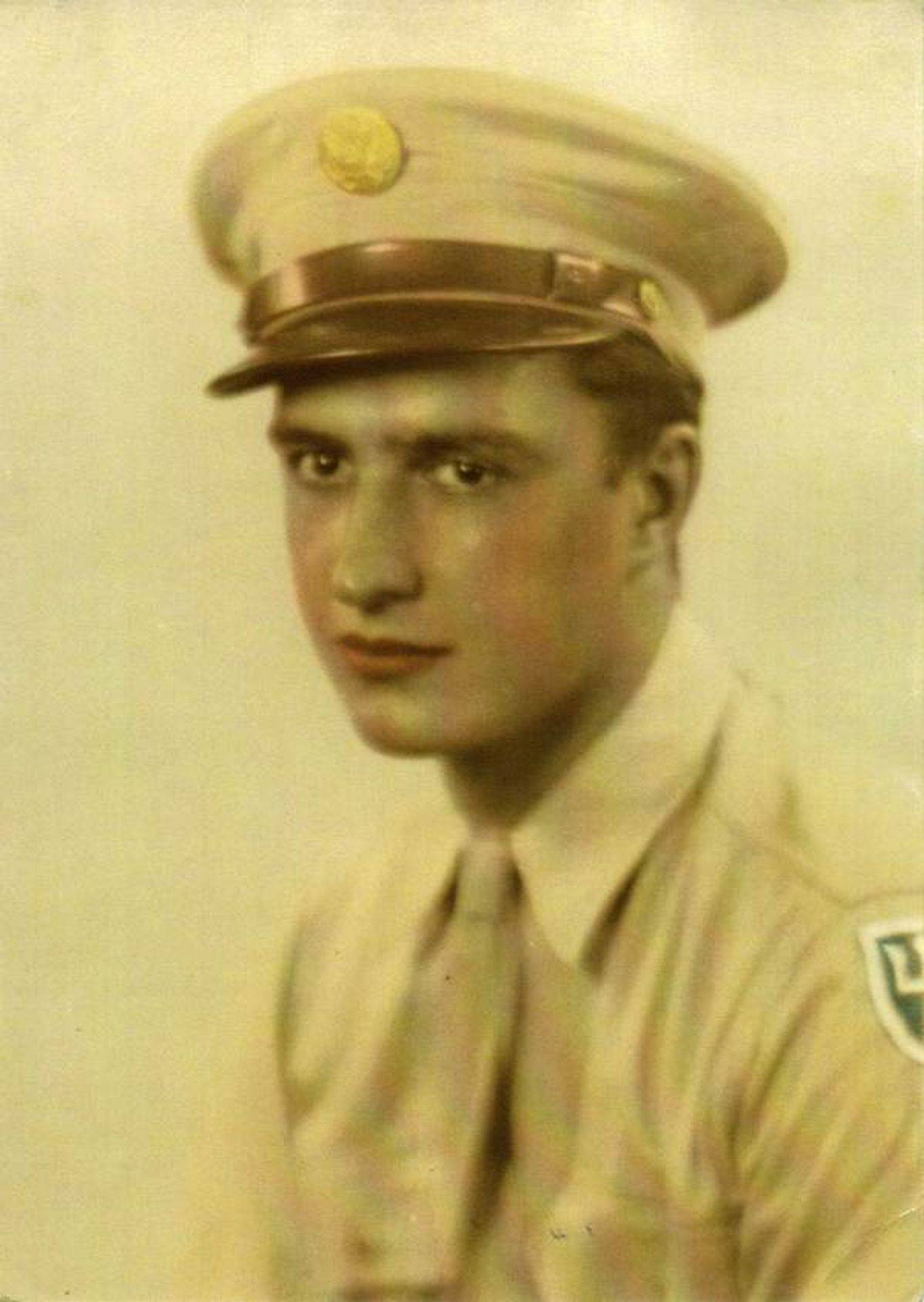
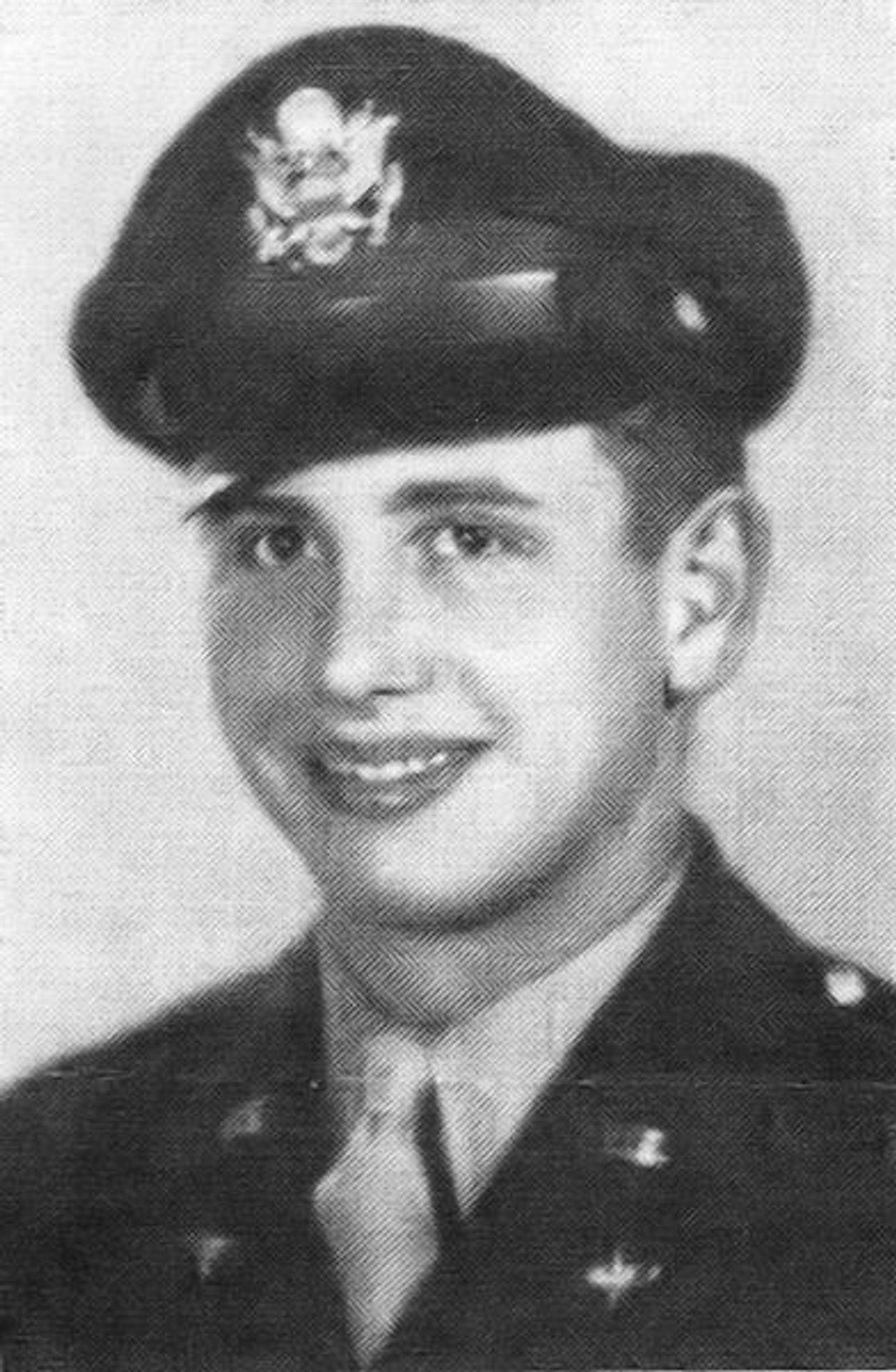
My Son Oh My Son!
Those were the short happy days we had together,
Days of your growing up, days of fun and laughter.
In this low hour their crowding memory holds me,
As I weep, bids me see you thus always here after.
My son oh my son, the stark words leap from the page,
“Killed in action April fourteenth,” Robert my son.
You of the brave heart and high hopes of things to come,
You were so young your life had only just begun.
Proudly you wore your shining wings and rode the sky,
It was a task you must do well, Peace was your goal.
But now no more in peril you need to wing your way,
Safe Oh my son safe now… in the Kingdom of the Soul.
Elizabeth Amlung Laws
The Community Church News
Memorial services for Flight Officer Robert F. Amlung, navigator on a B-24 Bomber, will be held Sunday evening at 8 o’clock, May 20, at the Congregational Church in Hudson. Chaplain Burns, home on furlough from the South Pacific, Bob’s pastor before the war, will conduct the service.
In lieu of flowers it is the wish of the family that friends in memory of Bob, may, if they so desire, make contributions to the American Red Cross for use of disabled veterans. This idea is particularly appropriate since a fellow crewman, one of his best friends, came through the accident with a broken back. According to a letter received from the chaplain who was on the scene very shortly after the crash, Bob was instantly killed. The accident happened April 14, at East Anglia, England as the plane was taking off. On April 17, Bob was buried with full military honors at the military cemetery, Cambridge, England.
Joining the Congregational Church in Hudson at an early age, Bob was active in the work of the Young People’s Society. He also sang in the Junior Choir. He was a member of the Darrowville Grange, and the DeMolay, a Masonic Order for young people in Akron. He graduated with the Stow High School, class of 1941. He was 22 years old on the 18th of March, spending his last birthday in Iceland.
Many are the friends who mourn the passing of Flight Officer Robert E. Amlung.
Church Memorial and Poem courtesy Theresa Rubeo

Sgt Willie Wilks – Press Release April 19, 1945
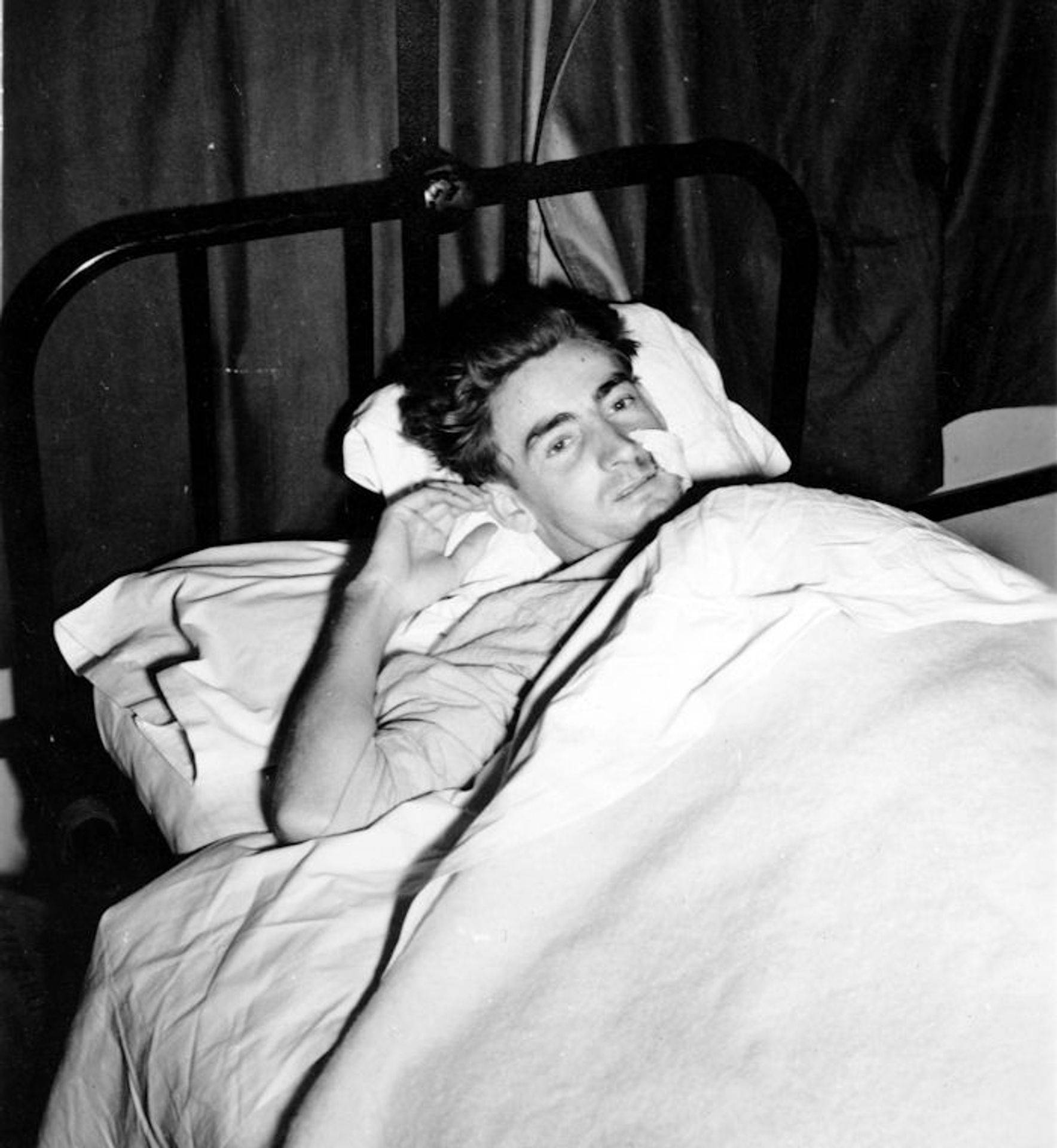
AN EIGHTH AIR FORCE LIBERATOR STATION, ENGLAND
Sgt. Willie R. Wilks of Albertville, Ala., sole surviving member of a bomber crash, is seen in the above photo recuperating in an army hospital.
While taking off on a bombing mission recently, Sgt. Wilks was riding in the waist of his B-24 Liberator bomber and was bracing himself against the “half deck” (sitting with his back against it). The plane gave a sudden lunge and crashed to the ground from an altitude of approximately 200 feet.
Immediately upon hitting the ground the ship exploded, throwing Sgt. Wilks clear of the wreckage. He was lying on the ground for four and one half hours before the crash crew found him and took him to the hospital, where he was treated for a cut lip and sprained back. The accident occurred on his second combat mission.
Sgt. Wilks, who is the son of Mr. Oliver R. Wilks of Albertville, Ala., is an aerial gunner with the 458th Bombardment Group. He entered the army on Oct. 12, 1942 and has been overseas since Feb. 15, 1945. He graduated from Albertville high school in 1942.
The 458th Bombardment Group, which is part of Maj. Gen. William E. Kepner’s Second Air Division, has completed more than 200 combat missions over enemy targets in the European Theatre of Operations.
The Bird Crash Site 2008

This photo is taken looking away from the airfield across the BIRD crash field towards the village of Hainford. The tall trees right in the distance in the centre of the photo are the exact spot where the HOOKEM COW crashed on April 14th 1945, shortly before the BIRD, the distance from the BIRD crash site to the HOOKEM COW site is roughly a half a mile, similarly the HOOKEM COW also struck something shortly after lifting off from the runway that morning (an electricity cable pole) causing it to break up and crash at Hainford. Due to the thick fog the BIRD and HOOKEM COW pilots were probably using instruments to take off by, but the technology of these instruments was not that brilliant at such low levels unlike today’s modern equivalents, and probably gave somewhat sketchy readings as to what exact height they had actually climbed to after the wheels had left the runway.
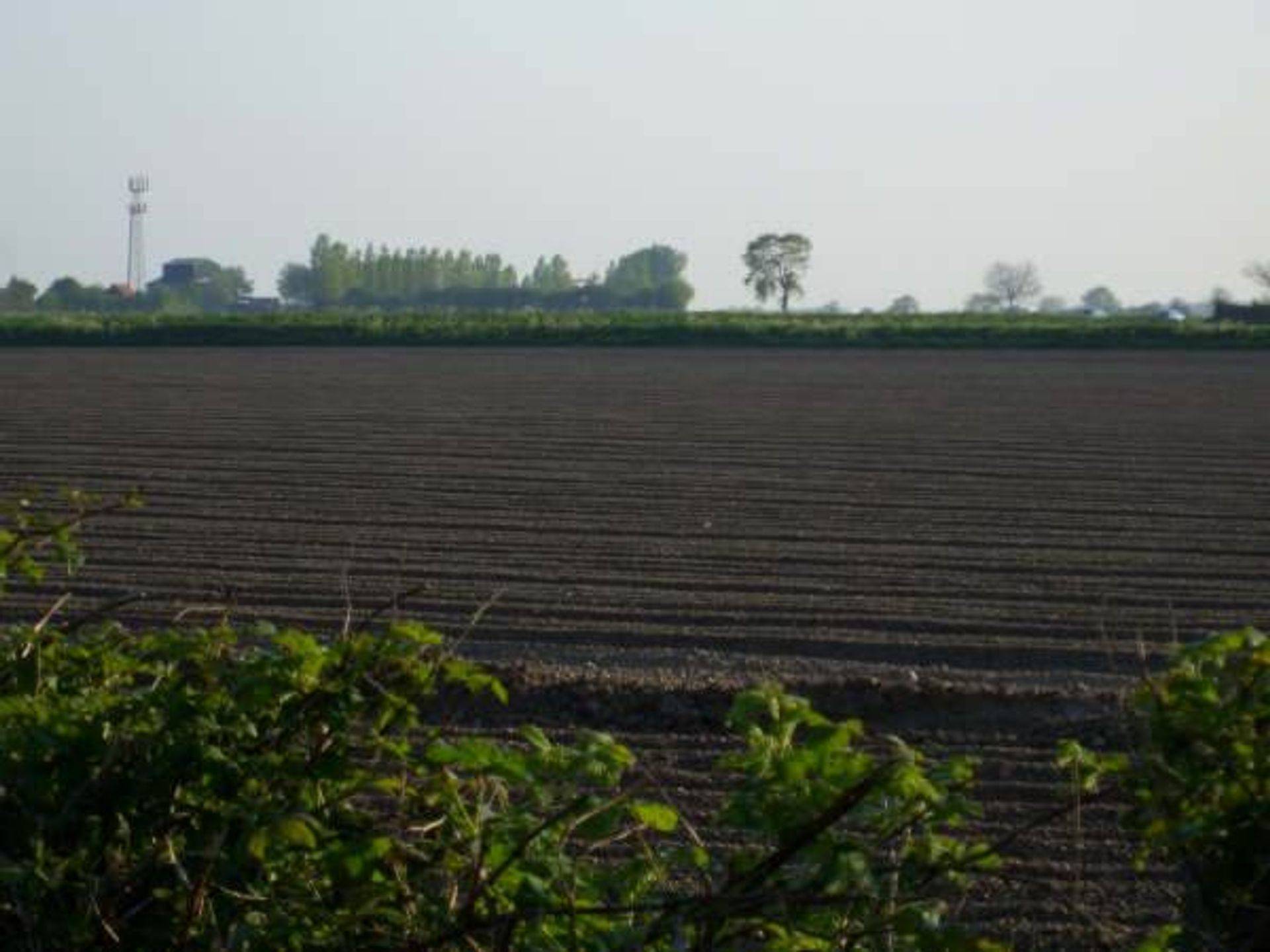
This photo is of the neighbouring field to the crash site field, it is looking towards the old airfield at Horsham St Faith (now Norwich International Airport). The soil is dark because it has just been planted with seed Potatoes, the bushes in the foreground are the top of the hedge dividing the two fields. The BIRD probably hit one of the Oak trees in the distance. The North East end of the old wartime runway (number 05) is just beyond the row of tall Poplar trees and the radio mast in the distance. The BIRD was taking off on the 05 runway heading in a North East direction. The morning was very foggy that day, near the trees in the distance in the shot there was a USAAF Military Police airfield outpost hut in WW2, it has been said that the MPs that were manning this outpost on April 14, 1945 reported back to the main airfield that they had heard the sound of an aircraft crashing in the distance but could not see anything because of the thick fog. It apparently took a while for the USAAF personnel searching for the crash to locate it because of the fog, even though it was only a short distance from the end of the runway. The main part of Horsham St Faith village is just out of view to the right in the photo. The field which the BIRD crashed in is right on the borders of three villages, they are Horsham St Faith, Frettenham (where I live),and Spixworth , I believe the reports state that the plane crashed in the parish of Spixworth.

This photo is of the BIRD crash site field itself, it is set with Barley at the time of the photo being taken. The dark shadow of an Oak tree across the middle of the photo is the exact spot where the BIRD crashed, it is looking towards the airfield. The BIRD would have been traveling towards the camera from the middle of the photo. The potato field in the first photo is to the right of this photo.

Pieces of The Bird gathered from the crash site by Trevor Hewitt, New Farm, in Frettenham.
(Photos and narrative courtesy: Trevor Hewitt)
